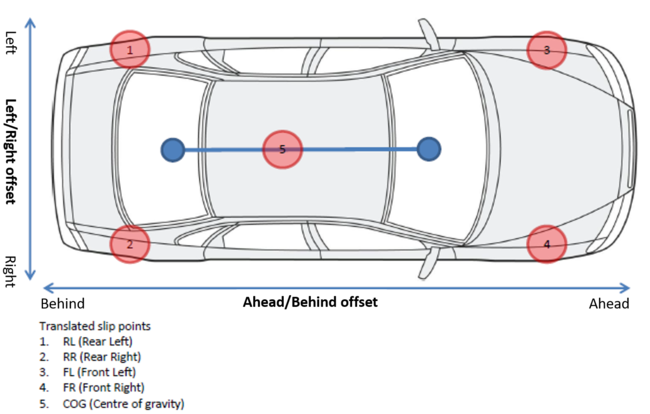08 Dual Antenna Setup - VBOX 3iS Dual Antenna RTK
Antenna Separation
For the VBOX 3iS unit to acquire satellite lock, you must measure the separation distance between the two antenna centre points accurately and configure it on the unit. The physical separation distance between the two antennas should be measured as accurately as possible, and entered in to the Separation option of the Dual Antenna menu.
To provide consistent reference, the two antennas should be aligned with the gold antenna connectors pointing in the same direction. This then allows a connector-to-connector physical reference measurement to be made.
Where possible, the antennas should be placed on a level plane. The measured distance between the antennas should be the 2D distance between the antennas as viewed from above. It is not the straight-line distance between the antennas, regardless of the mounting angle.
Note: Whenever the physical antenna separation is altered, this should be changed accordingly in the settings.
Roll Mode (optional)
The VBOX 3iS units allow you to separately test roll and pitch measurements during testing. By default, the VBOX 3iS unit will be set up for Pitch determination. If you wish to place your antennas across the width of the car to measure roll angle, you must make sure to set it to Roll Mode in the settings.
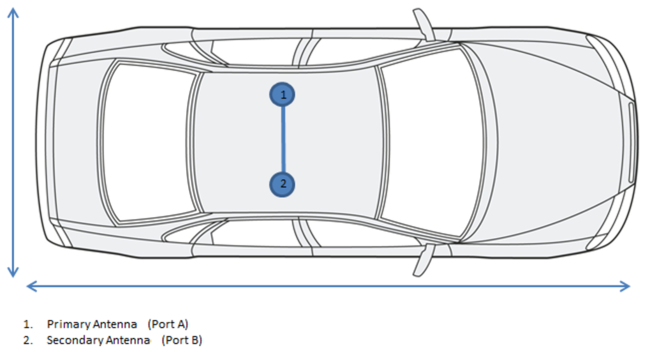
Align Antennas
To measure the slip angle with the most precision, try and get the alignment of the antennas as close as possible to the centre line of the vehicle. You can remove any residual errors in this alignment by using the Auto Align feature in the setup settings.
|
The calibration process requires the driver to drive in a straight line while maintaining a constant speed of more than 25 km/h for a short period of time. Notes:
The calculated alignment offset will be applied to the determined heading of the secondary antenna (True Heading). |
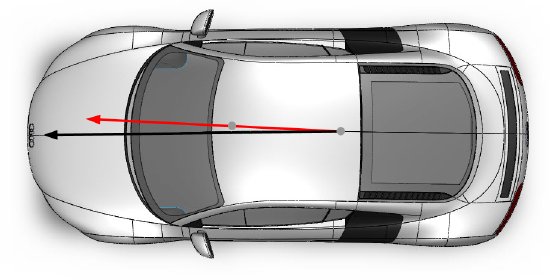 |
Level Antennas
The Pitch measurement uses the relative height difference between the antennas to calculate the Pitch Angle relative to the ground. If the roof of your vehicle is not perfectly flat in relation to the ground, this will show up as a Pitch offset. You can automatically remove any offset by performing the Auto Level feature in the settings.
We recommend that you perform the Auto Level on a flat, level section of road.
Slip Angle Translation
When you are using Dual Antenna mode, you may wish to take slip measurements from other locations on the vehicle, for example the centre of gravity or the slip over the wheels. You can set this by using the Slip Translation settings. You can set the five additional locations by using Ahead/Behind and Left/Right offsets from the primary antenna location (antenna 1 in the picture below).
IMU assistance: When you have an IMU module connected to the VBOX unit, you can use the yaw rate channel in the calculated slip channels. This is preferred as the signal-to-noise ratio is much lower than the GPS-derived yaw rate. Therefore no extra noise is added during the slip translation process.
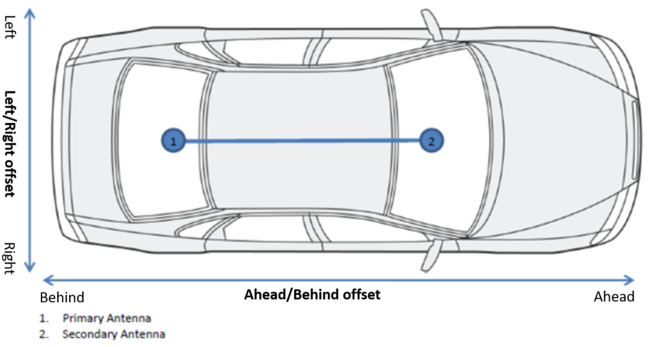
In section 1 on the diagram below, there is a Left offset between the primary antenna and the target area for slip measurement. Same again for section 2, there is an Ahead offset. You need to apply these offsets in the settings.
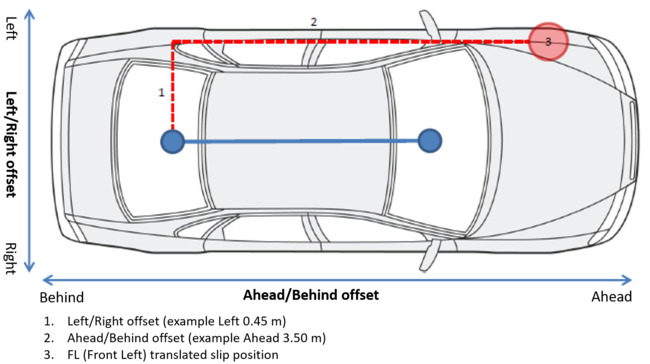
For the VBOX unit to calculate the channels correctly, each calculated slip point will require two offsets, Ahead/Behind and Left/Right.
Note: If the primary antenna is moved, you will need to measure the offsets again, for example when you are swapping between a pitch and roll setup.
